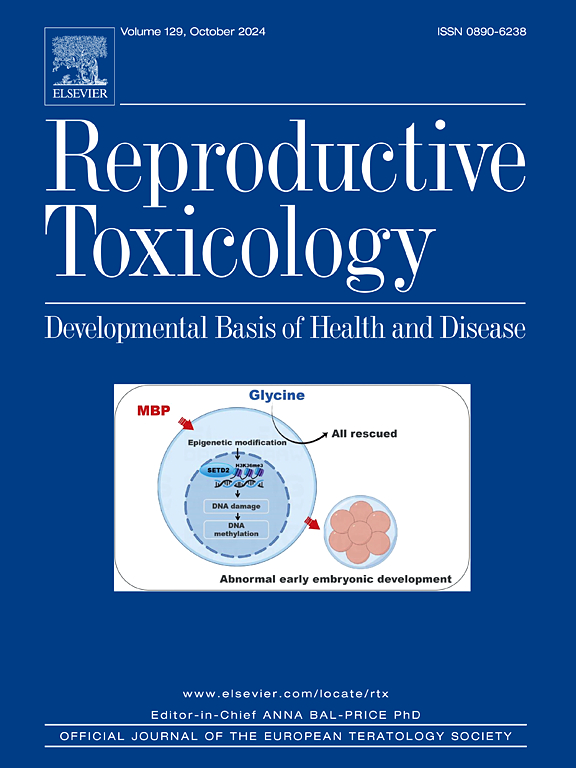Exposure to disinfection by-products and risk of diminished ovarian reserve: Case-control evidence and cellular metabolomic insights
IF 3.3
4区 医学
Q2 REPRODUCTIVE BIOLOGY
引用次数: 0
Abstract
Disinfection of drinking water is a critical measure for ensuring water safety and controlling waterborne infectious diseases. However, during the disinfection process, a variety of disinfection by-products (DBPs), some of which exhibit reproductive toxicity, are generated. This study aimed to assess whether DBP exposure contributes to the risk of diminished ovarian reserve (DOR) and explored the underlying metabolic mechanisms. A total of 182 participants, including 91 healthy women and 91 women with DOR, were recruited for a case-control study conducted between October 2023 and February 2024. Serum concentrations of DBPs, including dibromoacetic acid (DBAA), monochloroacetic acid (MCAA), dichloroacetic acid (DCAA), trichloroacetic acid (TCAA), chlorate, and perchlorate, were measured to evaluate DBP exposure. Key indicators for evaluating DOR included antral follicle count (AFC), anti-Mullerian hormone (AMH), and follicle-stimulating hormone (FSH). All six DBPs were higher in DOR patients (all p < 0.05). After controlling for covariates, all DBPs showed negative correlations with AMH and AFC, positive correlations with basal FSH, and a significant association with the risk of DOR (all p < 0.05). To further investigate the underlying mechanisms, we conducted an in vitro study using human ovarian granulosa cell line (KGN). KGN cells were exposed to DBAA and perchlorate for 48 hours, and metabolomic analysis was performed to identify altered metabolic pathways. Metabolomics data suggested that DBAA and perchlorate might have contributed to DOR by disrupting arginine biosynthesis and purine metabolism, respectively. In conclusion, DBPs exposure might have contributed to DOR risk by disrupting granulosa cell (GC) metabolism.
求助全文
约1分钟内获得全文
求助全文
来源期刊

Reproductive toxicology
生物-毒理学
CiteScore
6.50
自引率
3.00%
发文量
131
审稿时长
45 days
期刊介绍:
Drawing from a large number of disciplines, Reproductive Toxicology publishes timely, original research on the influence of chemical and physical agents on reproduction. Written by and for obstetricians, pediatricians, embryologists, teratologists, geneticists, toxicologists, andrologists, and others interested in detecting potential reproductive hazards, the journal is a forum for communication among researchers and practitioners. Articles focus on the application of in vitro, animal and clinical research to the practice of clinical medicine.
All aspects of reproduction are within the scope of Reproductive Toxicology, including the formation and maturation of male and female gametes, sexual function, the events surrounding the fusion of gametes and the development of the fertilized ovum, nourishment and transport of the conceptus within the genital tract, implantation, embryogenesis, intrauterine growth, placentation and placental function, parturition, lactation and neonatal survival. Adverse reproductive effects in males will be considered as significant as adverse effects occurring in females. To provide a balanced presentation of approaches, equal emphasis will be given to clinical and animal or in vitro work. Typical end points that will be studied by contributors include infertility, sexual dysfunction, spontaneous abortion, malformations, abnormal histogenesis, stillbirth, intrauterine growth retardation, prematurity, behavioral abnormalities, and perinatal mortality.
 求助内容:
求助内容: 应助结果提醒方式:
应助结果提醒方式:


